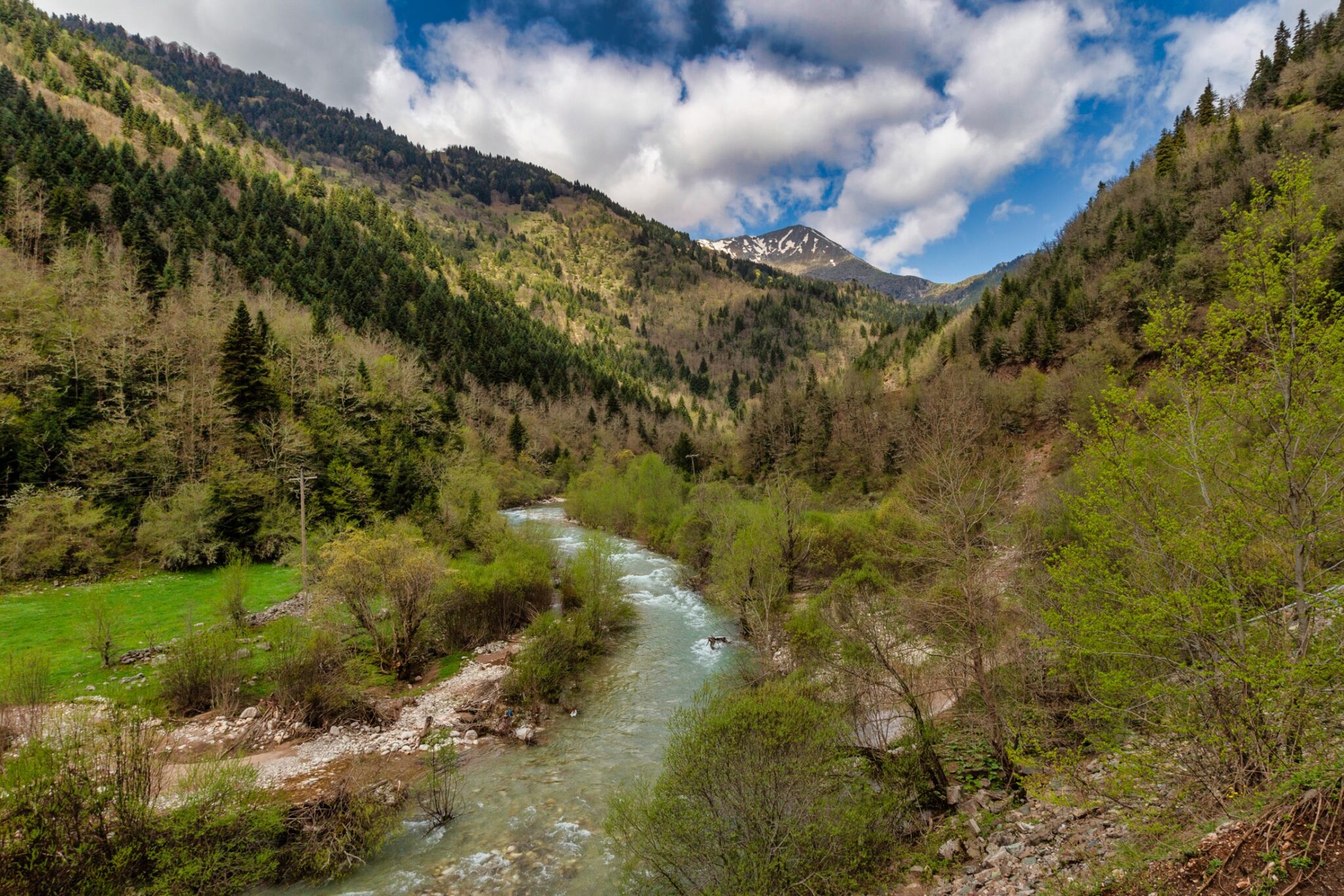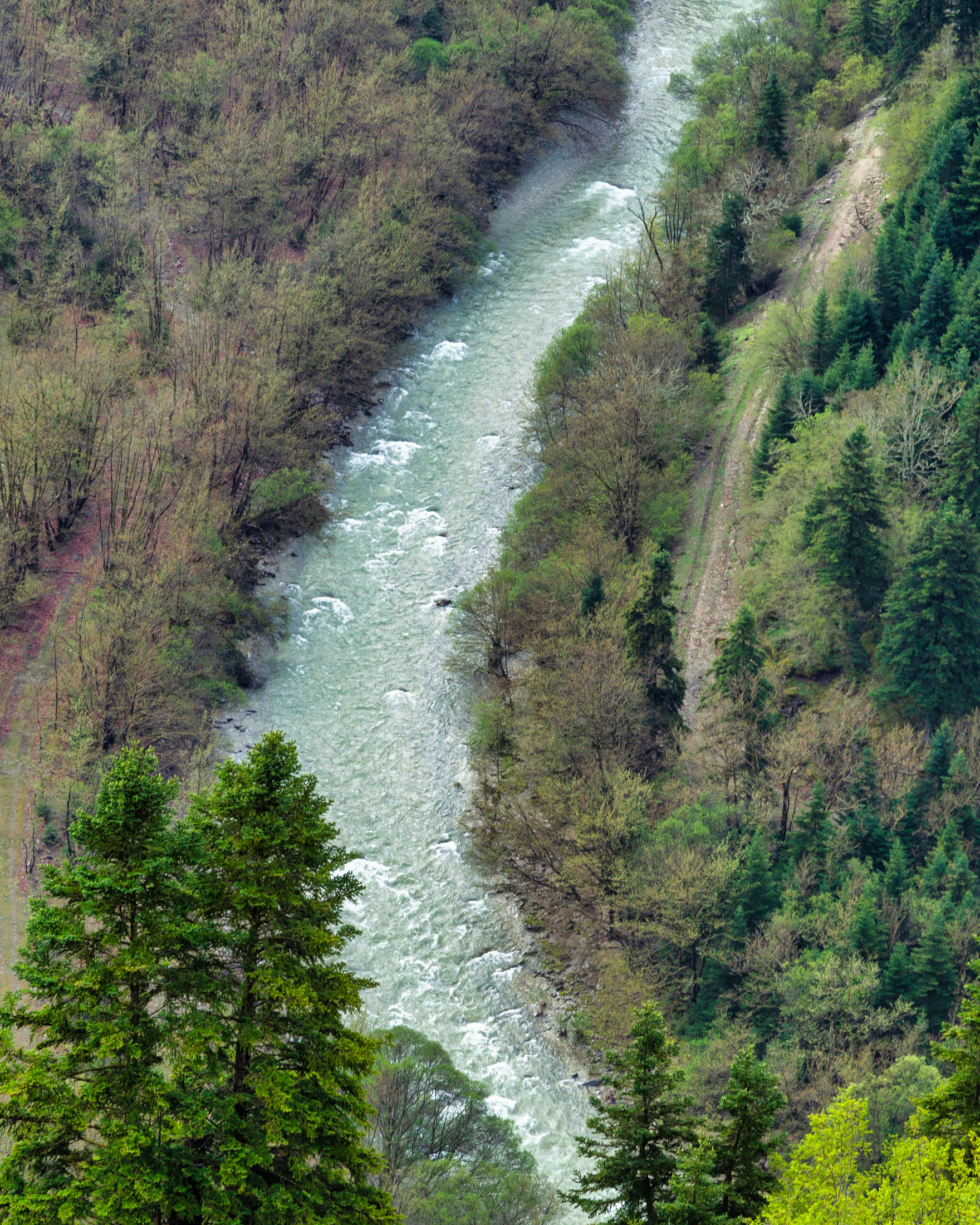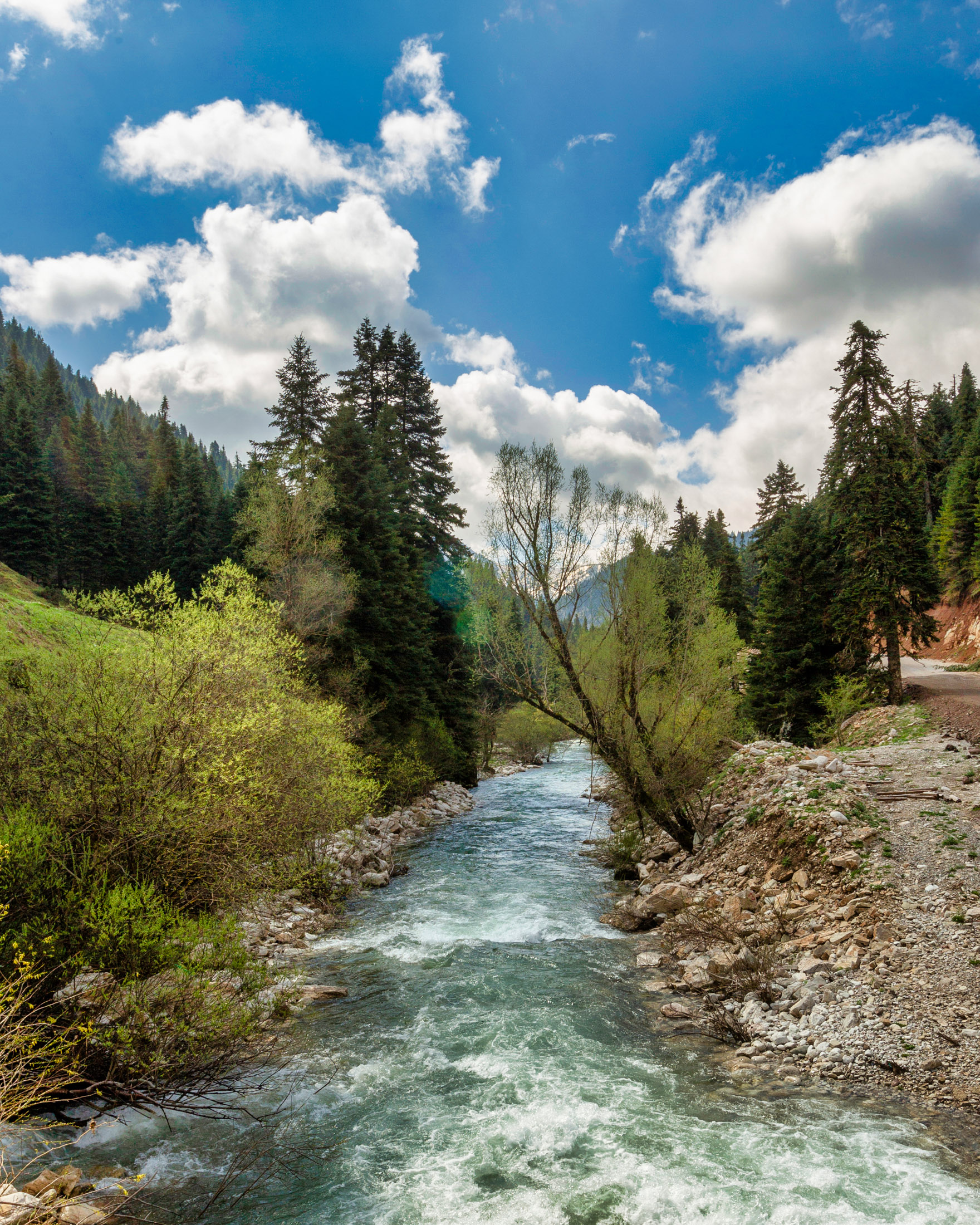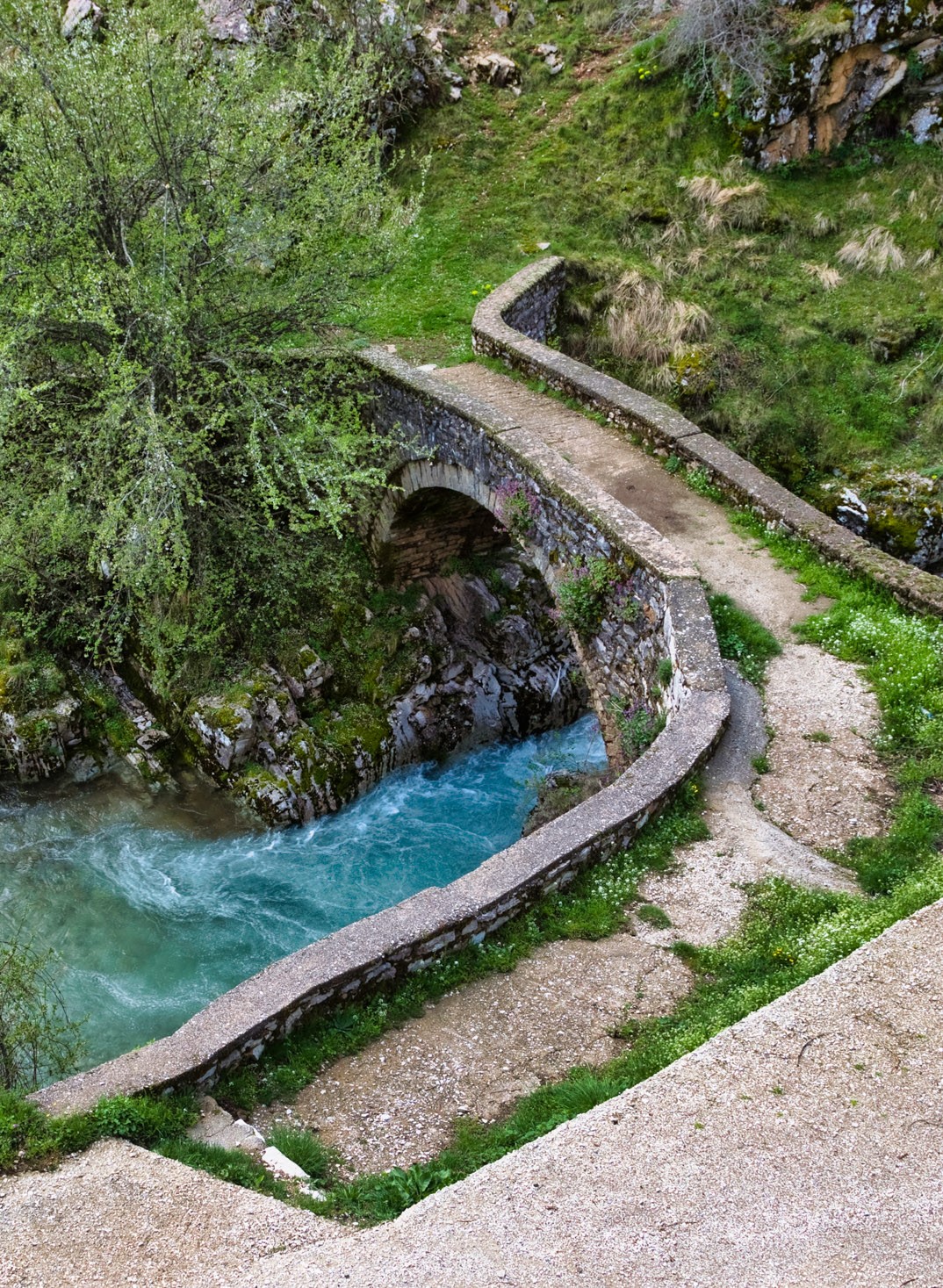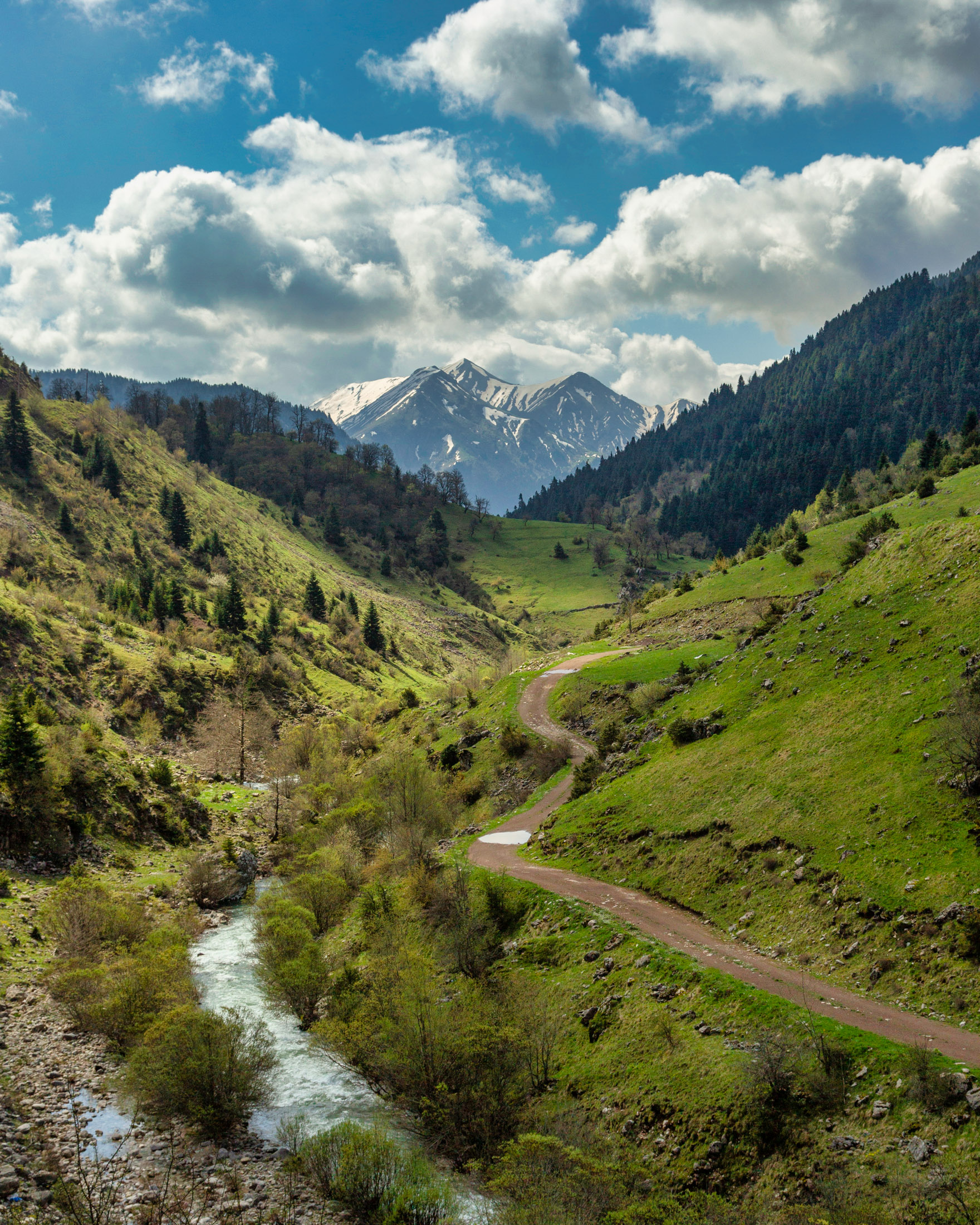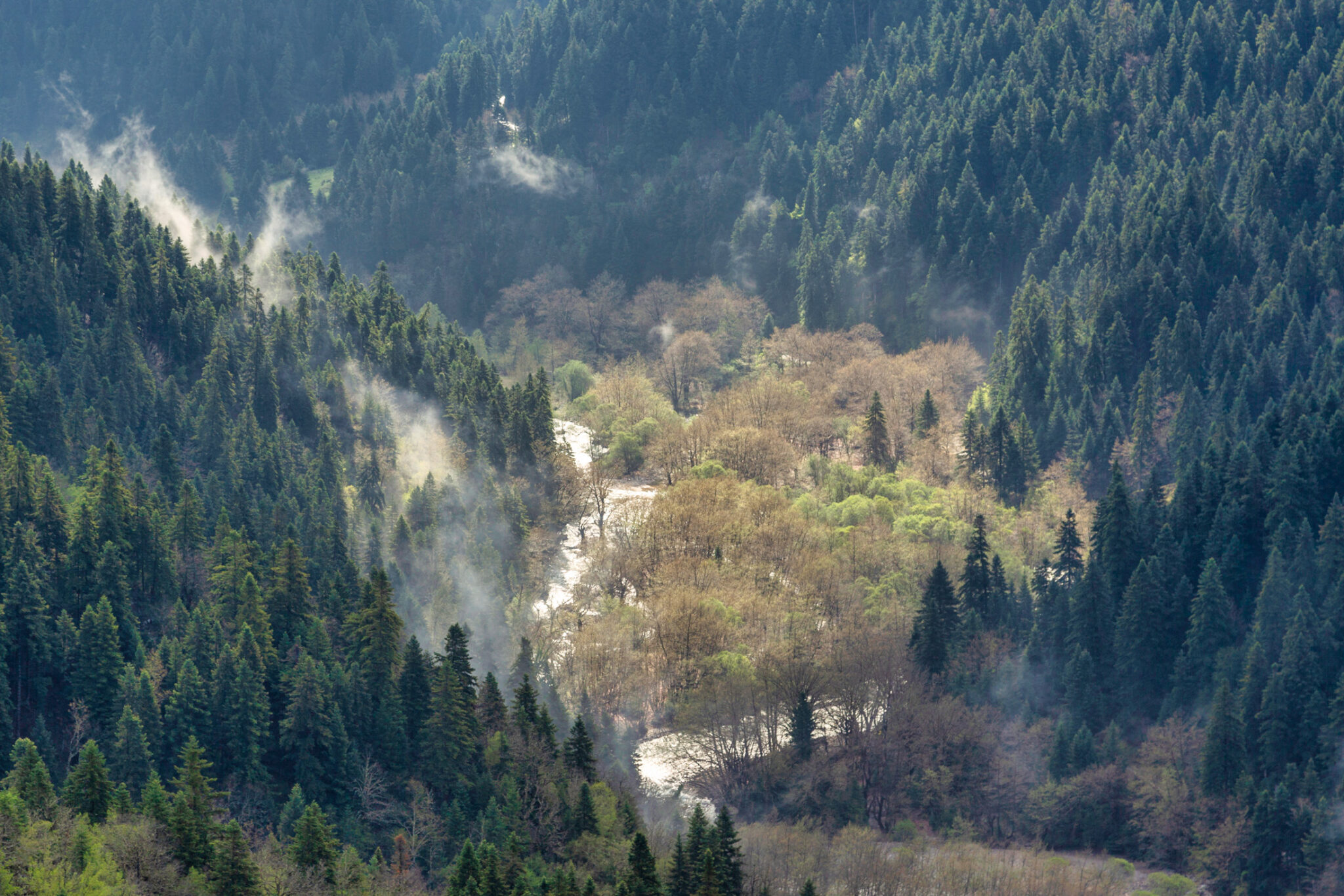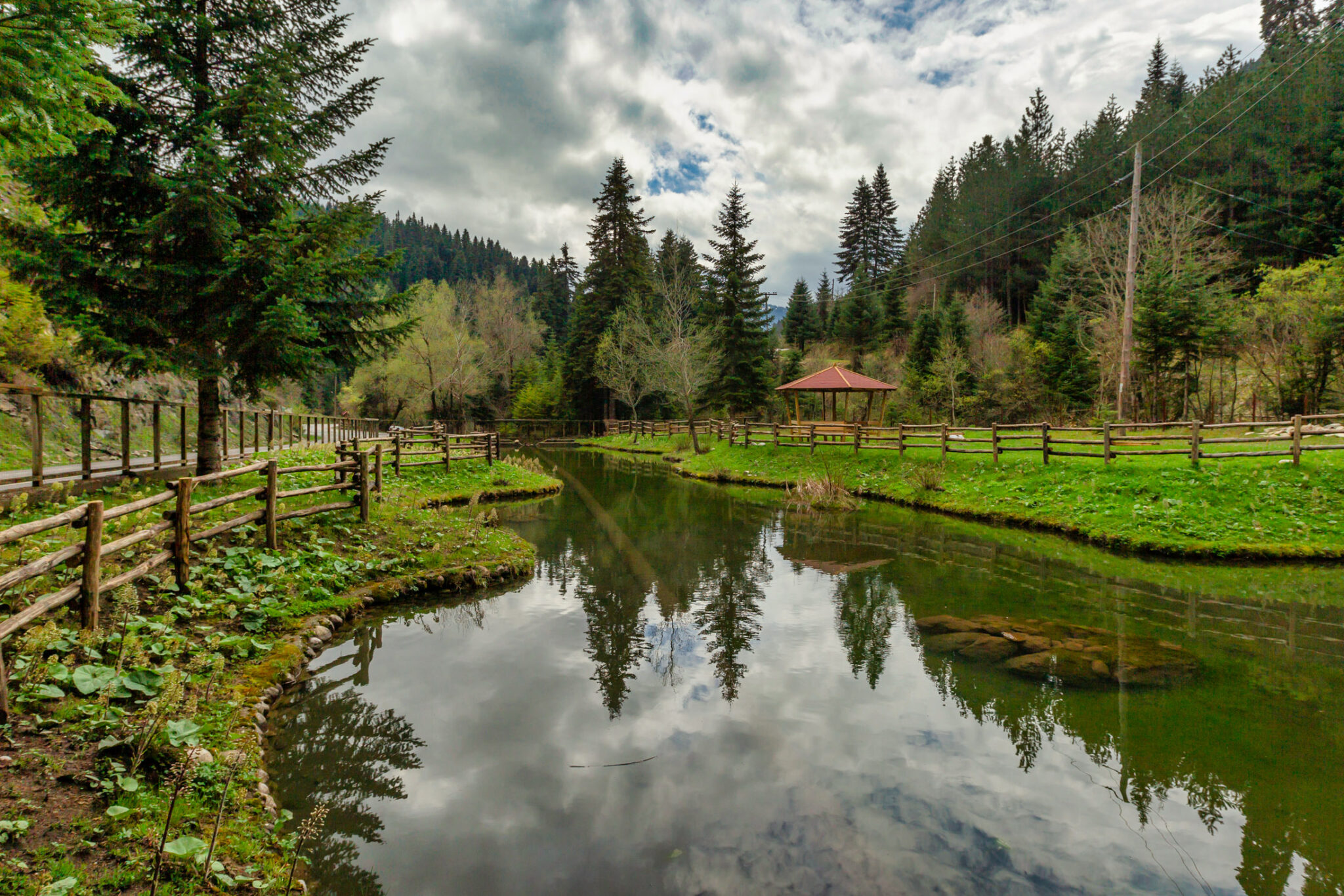There is some confusion;Which is Aspropotamos and which is Acheloos? The answer is not so simple, but the accuracy of the name doesn’t matter much to anyone visiting the majestic mountainous landscape that develops around the crystal clear waters, such as steep cliffs and beautiful forests. We find ourselves between Eastern Epirus and Western Thessaly, on the Lákmos (informally called Peristeri) mountain, which stands at the border of Ioannina with Trikala and is considered a part of the Pindos mountain range.
From here, the Acheloos River, the second longest river in Greece after the Aliakmon River, begins. It flows through Trikala, passes through the boundaries of Karditsa with Arta, heads towards Evrytania, enters Aetolia-Acarnania – separating, the historical regions of Aetolia and Acarnania – and empties into the Ionian Sea after a journey of 220 kilometers. Throughout its course, it is fed by four main tributaries (the Agrafiótis, the Taurópous, the Trikeriótis, and the Ínachos), which significantly help in highlighting it as the country’s native river with the richest waters.
Acheloos, Aspropotamos, and a Breathtaking Mountain Landscape
As previously indicated, Aspropotamos is commonly confused with Acheloos, although most agree that fundamentally we’re talking about the same river. In fact, where it passes through the Vlachochoria in the region, you may also hear the Vlach name Aráo Álbou. Its name seems to reflect the fact that it flows in a valley filled with white pebbles, which makes its waters appear white (“aspros” means white and “potamos” means river”). Others, believe that it refers to the particularly frothy appearance of its waters during the spring months, when the snow melts from the surrounding mountains, significantly swelling the water’s body.
Some now consider that Aspropotamos is simply an alternative, more popular name for Acheloos. In reality it refers only to the area located near its sources. In any case, it is an important natural landmark, which, with its commanding mountainous landscape, attracts many visitors every year. Aspropotamos River is mostly identified with the idyllic landscapes of the Trikala Mountains and enhances their beauty with its wild waters, which often flow under picturesque, rocky bridges built by Epirus’ stone masters of the past. Its waters also play a pivotal role in the lush development of the area’s impressive mixed forests. Coming here, you will see many slopes covered with dense oak trees, pines, and birches. The rest of the vegetation is also opulent and depending on the season, you’ll see chestnuts, hornbeams and wild cherry trees, various species of orchids, violets, and wild roses.
It is well worth noting the wildlife that thrives here, both around the banks of the Aspropotamos and under its waters. The avifauna and the herpetofauna, in particular, are abundant: visitors to the area who love birdwatching will be able to see many interesting species of birds, such as the golden eagle, the griffon vulture, the black stork, the eagle owl, the black woodpecker, and many others. Similarly, those interested in reptiles and amphibians will find many fascinating species here, such as the Balkan whip snake, the European pond turtle, the green lizard, and the Balkan stream frog.
As for wildlife, you’ll find salamanders, hedgehogs, alpine shrews, Mediterranean chameleons, Rousette bats, as well as otters, herons, and kingfishers. Often, you’ll also spot bears, wolves, wild boars, and deer along the river. The fish population, includes the endangered endemic fish species, as well as eels, Peloponnesian bream, and Lefkas fish, a species found only in the country’s rivers.
How to Get Here
Whether you’re interested in hiking, a 4×4 tour or rafting (the best time for this is in April), to explore the Achelous river, you should come to the valley of the river, where the Vlachochoria, known collectively as the “villages of the Achelous,” are built on steep slopes. Closer to the sources is the village of Halki, while further downstream is the village of Mesovouni.
Access to the area is possible by car, either via the Rio-Antirrio Bridge, or through the nearby towns of Agrinio or Karpenisi. Many choose to come from Larisa: they bypass Trikala on the regional road, continue towards Pyli and ascend to Elati, before taking the road to Pertouli and Neraidochori. From there, they then descend into the Aspropotamos valley. However, there is also a route that starts from Kalambaka, heading towards Ioannina, following the old road. If you turn towards Kastania as soon as you pass the Murgani bridge, all you have to do is climb towards the Aspropotamos valley. And in both cases, keep in mind that you will need around 1.5 hours.
Read also:
Agios Nikolaos Grove: Naoussa’s Idyllic Attraction
Agia Varvara: An Artificial Lake on Greece’s Longest River
Zazari: A Beautiful Lake Nestled in Mountainous Florina, North West Greece



